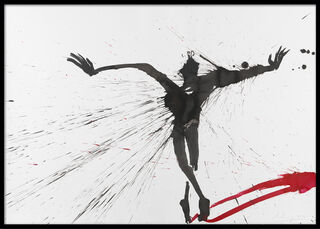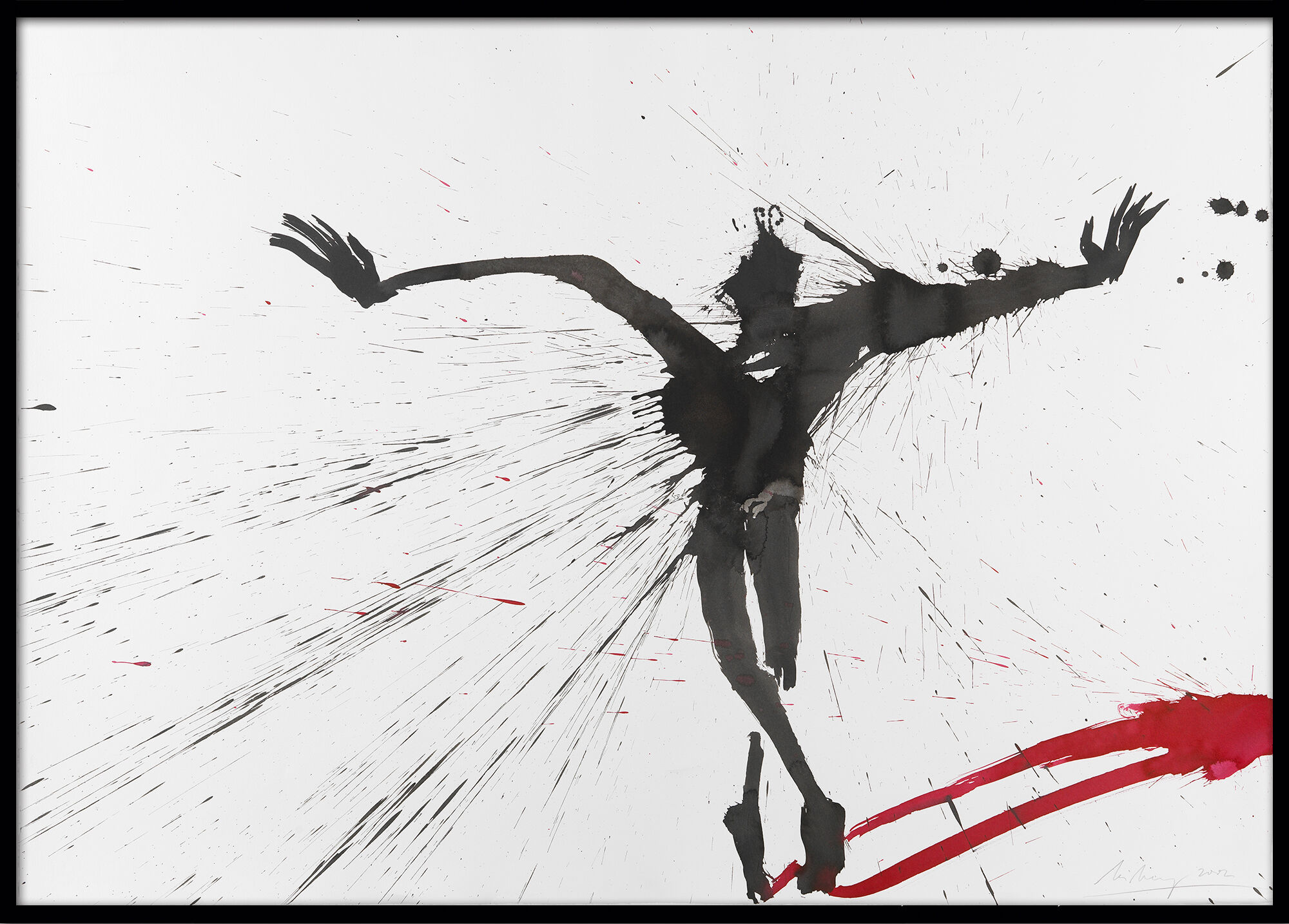Picture "Untitled (Z 03 001)" (2003) (Unique piece)


Picture "Untitled (Z 03 001)" (2003) (Unique piece)
Quick info
unique piece | signed | dated | ink on handmade paper | framed | size 82 x 114 cm
Detailed description
Picture "Untitled (Z 03 001)" (2003) (Unique piece)
Ink on handmade paper, 2003. Signed and dated. Motif size/sheet size 76 x 108 cm. Size in frame 82 x 114 cm as shown.

About Helge Leiberg
Helge Leiberg, born in Dresden, Germany in 1954, studied at the Dresden Academy of Fine Arts. Music is a recurring theme in the work of the multimedia artist, who realised numerous musical projects with A. R. Penck, among others.
Helge Leiberg's world of pictures and sculptures consists of symbolic figures that are slender, with overlong limbs and expansive gestures. Their dancing gestures express pure life: sometimes oblivious, sometimes interacting, they express affection and aversion, struggle and union. His masterly line management and virtuoso depiction of movement characterise his work. Leiberg draws inspiration from the influence of painting, dance and music. He played in a band with A.R. Penck and realised performances with Christa Wolf at the Salzburg Festival.
In 2023, he will receive the honorary prize of the Brandenburg Minister-President as part of the Brandenburg Art Prize, which is awarded by the Märkische Oderzeitung and the Stiftung Schloss Neuhardenberg.
Helge Leiberg was awarded the Brandenburg Art Prize for Painting in 2013. His works can be found in the Prussian Cultural Heritage Foundation as well as in the Würth Collection.
A one-of-a-kind or unique piece is a work of art that has been personally created by the artist. It exists only once due to the type of production (oil painting, watercolours, drawing, etc.).
In addition to the classic unique pieces, there exist the so-called "serial unique pieces". They present a series of works with the same colour, motif and technique, manually prepared by the same artist. The serial unique pieces are rooted in "serial art", a type of modern art, that aims to create an aesthetic effect through series, repetitions and variations of the same objects or themes or a system of constant and variable elements or principles.
In the history of arts, the starting point of this trend was the work "Les Meules" (1890/1891) by Claude Monet, in which for the first time a series was created that went beyond a mere group of works. The other artists, who addressed to the serial art, include Claude Monet, Piet Mondrian and above all Gerhard Richter.


